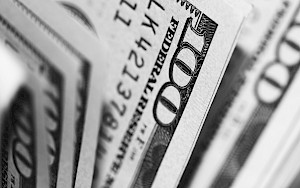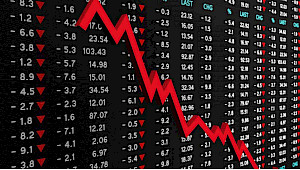De-dollarization: Not a matter of if, but when
May 16, 2023Originally published in Quincy Institute's Responsible Statecraft on May 3, 2023
The United States may have a powerful military, but its true strength lies in the value and status of its currency.
With the U.S. dollar seen and accepted as the world reserve currency, America has the privilege to control the global financial system, run federal deficits without having to worry about consequences, and literally print trillions of dollars out of thin air.
This unique advantage also allows the U.S. to keep interest on its accumulated debt low and provide its citizens a standard of living that would not otherwise be possible. But how long will it last?
Since the end of World War II, the U.S. has held what is often referred to as an “exorbitant privilege” over the global economy. From the destruction of the war came America’s rise and, with it, the acquisition of most of the world’s gold reserves and half the world’s GDP. Its wealth gave the U.S. the power to dictate the terms of the Bretton Woods Agreement between 44 countries.
This agreement stipulated that the dollar would be pegged to gold, while all other countries’ currencies would be pegged to the dollar. The essence of it was that the dollar was as good as gold, backed by its reserves. Countries could rest assured that they could at any time exchange their dollars for physical gold.
For a few decades, the agreement worked well. But the U.S. began running large deficits during Lyndon Johnson’s “Guns or Butter” policy of the late 1960s, which led certain European countries, particularly France, to begin to exchange their dollars for gold. In 1971, concerned that its gold reserves were being depleted, the Nixon administration made a unilateral decision to temporarily close its gold window, turning the dollar into a fiat currency.
This marked the end of Bretton Woods and ushered in an era of floating exchange rates that still exists today.
The U.S. avoided the economic hardship of essentially devaluing its currency by implementing the ingenious plan of creating the petrodollar. This simple but far-reaching idea had significant financial and geopolitical consequences. In essence, the U.S. and Saudi Arabia entered into an agreement whereby the Saudis agreed to exclusively sell their oil in dollars and invest those dollars in U.S. treasury bills. In return, America provided the Saudis a security guarantee.
Oil is the most widely traded commodity in the world, and by pricing it in dollars, there was an ensured global demand for American currency.
Needless to say, the Europeans were not pleased with America’s broken promise. To fight back, some European nations began discussing the possibility of returning to a gold standard which excluded the U.S. dollar.
The U.S. administration became aware of the European plan and, according to the minutes of the 1974 meeting between Henry Kissinger and Assistant Secretary Thomas Enders, it was made clear that this would not be allowed to proceed. The highlights of that meeting were unambiguous to say the least. Collectively, European countries had more gold than the U.S. If they joined forces, they could set the price of gold at a higher level, thus creating additional reserves and credit. In Kissinger’s words, they would be able to create a “money printing machine.”
The minutes also clearly stated that such a move would be detrimental to America’s interests and that, if Europe tried it, America would “squash” them. Ultimately, for the plan to succeed Germany would have had to cooperate. But with the Soviet Union looming on its doorstep, it was in no position to cross the U.S.
America’s strong dollar policy was successful for the ensuing decades. But by the late 1990s, two important seeds began to grow: China’s economy and America’s profligacy. By the early 2000s, America had transformed from once being the world’s largest creditor to becoming its largest debtor nation and the Federal Reserve began a reckless monetary policy which has lasted for the last two decades.
Following the 2008 financial crisis, China complained about how the U.S. was devaluing the dollar through its large accumulation of debt and excessive printing of money and began to voice its desire to introduce a new global financial system. With the notable exception of countries subject to U.S. sanctions (e.g., Russia, Venezuela, Iran, and North Korea), the idea of a new monetary system was met with indifference. The concept of anything superseding the dollar was considered unthinkable by most of the developed world as verging on heresy by America.
That is, until recently.
When Russia invaded Ukraine, everything changed. The U.S. and NATO countries (the West) not only imposed sanctions on Russia, but they also froze its U.S. dollar reserves and blocked it from the SWIFT dollar transfer system.
Seeing an opportunity, China took notice and encouraged much of the world to follow suit. The race began to find alternatives. While the West was right to confront Russia for its unprovoked aggression, they underestimated the global response to these sanctions.
The BRICS countries and much of the global south have been reluctant to sever ties with Russia for a variety of reasons — from needing their oil, food, fertilizer, and military equipment, to taking advantage of the Wagner Group to counter domestic anti-insurgency efforts.
Additionally, many in the global south have harbored long-held resentments towards the West’s rhetorical “rules-based world order,” which they see as hypocritical and self-serving. The freezing of Russia’s dollar reserves and exclusion from the SWIFT system also put countries on notice that they might be next.
Financial systems are built on trust and, if they are weaponized, they lose the trust necessary to retain their dominance.
As such, in just over a 12-month period, countries around the world mustered the courage to begin openly discussing the creation of alternative methods to conduct trade and settlement, as well as reducing their dollar reserves. The trade and settlement role of the dollar is where most of exiting will occur and where the demand for the dollar will fall away more precipitously.
Furthermore, BRICS countries have attracted numerous new member applications over the past year, with Egypt, Turkey, Algeria, and most recently Saudi Arabia showing interest and making declarations about creating a BRICS currency to compete with the dollar.
Many of these countries have been aggressively adding to their gold reserves over the past 13 years, and the size of their purchases has been accelerating, suggesting that perhaps any new currency might be backed by gold. Brazil (which has become increasingly vocal about its displeasure with the U.S. dollar system) and Argentina have started promoting the idea of creating a South American trading block and currency, the sur, similar to the European Union and euro.
The laundry list of dollar alternatives is long and growing daily. Examples include China testing cross-border digital currency settlements with Thailand and the UAE, insisting that sanctioned countries such as Russia, Iran and Venezuela accept yuan as payment for oil. Saudi Arabia is considering doing the same (there are rumors that Saudi is already selling oil for yuan and converting those yuan for gold on the Shanghai exchange). India is also buying some of its Russian oil in UAE dirhams. The simplest method, which is becoming increasingly popular, is bi-lateral agreements using local currencies.
The critical unanswered question is how the U.S. will respond to moves to de-dollarize. Any sudden decrease in U.S. dollar demand could have disastrous consequences for Americans. It could potentially trigger a U.S. dollar crisis leading to very high inflation, or even hyperinflation, and initiate a debt and money printing cycle that could tear apart the social fabric of society.
In short, any U.S. administration would ultimately consider any such de-dollarization moves to be matters of national security.
Much of the global community is cheering, however. A lot of sovereign debt held by the global south is denominated in greenbacks, and an overpriced dollar makes debt service nearly impossible today. Additionally, because most commodities are priced in dollars, many less developed countries are importing inflation that would otherwise accrue to the U.S.
That being said, BRICS nations should consider what America’s reaction to sudden shifts away from the dollar might be. History has demonstrated that it is exceptionally rare for a transfer of global economic power to take place without major warfare.
Despite America’s likely opposition, de-dollarization will persist, as most of the non-Western world wants a trading system that does not make them vulnerable to dollar weaponization or hegemony. It’s no longer a question of if, but when.
To break away from this hazardous trajectory, credible and inclusive dialogue regarding a new global agreement should commence now, in which major economies consent to a new monetary system (perhaps backed by gold and/or commodities) by consensus, including the U.S. This would inevitably involve substantial discomfort for the U.S., possibly to such an extent that it is politically unpalatable.
The best we can hope for is a process that facilitates the gradual decrease in dollar demand over a lengthy period of time, allowing the U.S. and other countries to adjust accordingly. A multipolar monetary system might provide a more equitable playing field to poorer countries and just maybe give the U.S. and the world longer-term economic and political stability. The likely outcome of this would still be quite chaotic and involve a drop in the standard of living for Americans. Nevertheless, this path appears inevitable, and such an option is preferable to the inevitable turmoil of the more extreme scenarios we have seen throughout history.










